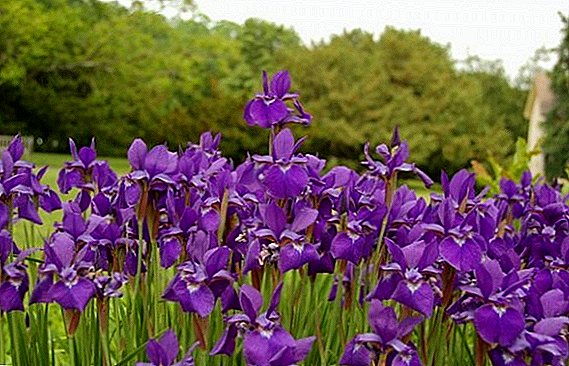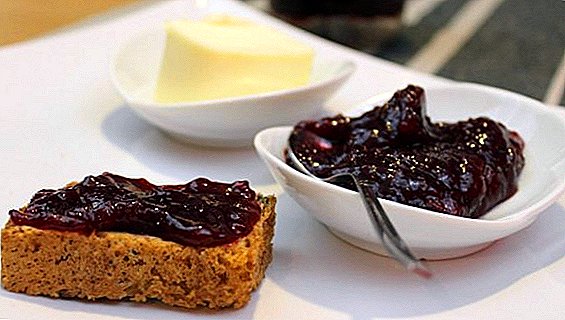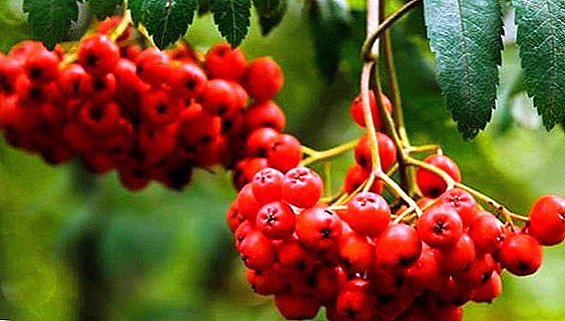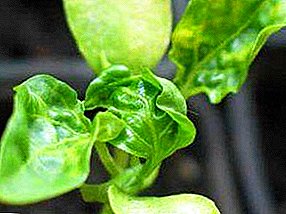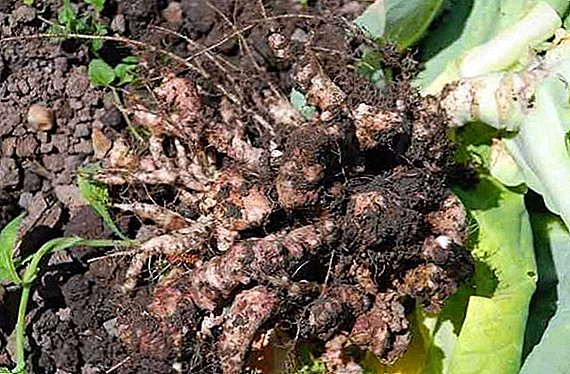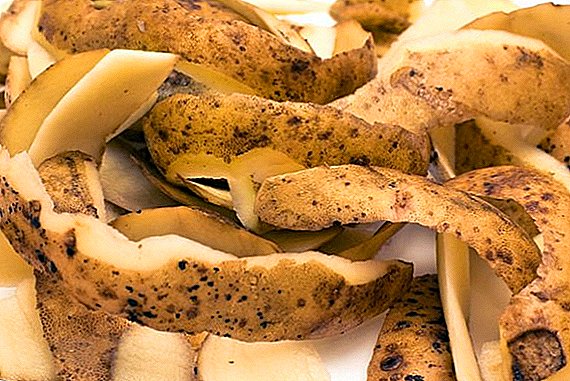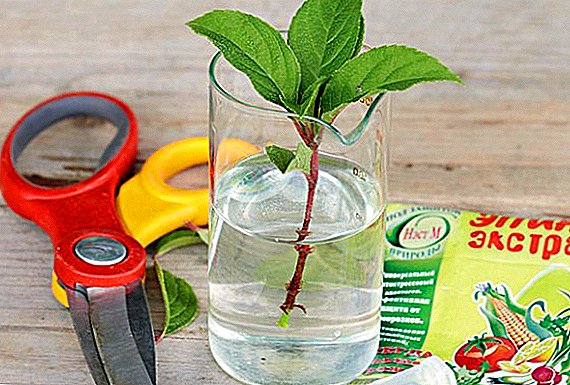 Root growth stimulants are commonly referred to as chemicals of different nature, which are used in crop production to improve the growth and rooting of cuttings, which is especially important for the vegetative reproduction of whimsical and difficult-to-grow species. Such substances stimulate the accumulation of important organic substances in the place of rooting, which contributes to the improvement of cell division processes.
Root growth stimulants are commonly referred to as chemicals of different nature, which are used in crop production to improve the growth and rooting of cuttings, which is especially important for the vegetative reproduction of whimsical and difficult-to-grow species. Such substances stimulate the accumulation of important organic substances in the place of rooting, which contributes to the improvement of cell division processes.
Preparations for plant growth are fairly common in the domestic market for more than one year. Among them can be found as a long time popularized expensive potent chemicals, and folk remedies, the costs for which are minimal. However, it is not easy to make the optimal choice among the stimulants of rooting, and today we have to figure out what each of them is, learn all the advantages and disadvantages.
Folk remedies
The main indication for the use of popular growth stimulants is unfavorable period for grafting and difficult rooting of the plant. Also, stimulants are simply indispensable when the stalk is taken from a weakened plant or it is necessary to restore the damaged root system due to the death of the plant, as well as during transplantation. Consider in detail one of the most popular tools.
Willow water
This is one of the oldest among all known methods of rooting stimulation. Since ancient times, willow water was used as the best rooting means, which reduced the number of dying garden seedlings to zero.
The main essence of the method is to put a few willow twigs into ordinary tap water and wait until the roots grow on them, after which they can be removed - willow water is ready.  The process is quite long, in some cases, rooting willow need to wait about 2 weeks. It is recommended to choose young branches, not more than 6 mm thick. The main secret of cooking this stimulator is the pretreatment of willow fragments. In order to prevent the development of harmful microorganisms in water, the cuttings must be treated with an alcohol solution.
The process is quite long, in some cases, rooting willow need to wait about 2 weeks. It is recommended to choose young branches, not more than 6 mm thick. The main secret of cooking this stimulator is the pretreatment of willow fragments. In order to prevent the development of harmful microorganisms in water, the cuttings must be treated with an alcohol solution.
The essence of this water is that willow is a natural source of salicylic acid. This natural coagulant is a blocker of the stress hormone in plants, which is released when cutting off the stalk. As a result, rooting processes start instantly in the plant. Also, willow water is very effective in watering seedlings, which further affects the overall immunity of the plant body.
Honey
Like willow water, honey is no less a popular stimulator of plant roots at home. Its main advantage is ease of use and preparation. To do this, 1 teaspoon of honey is dissolved in 1.5 liters of warm water.
Immerse the cutting solution in the resulting solution and soak it for 10-12 hours. A bee product rich in a whole complex of nutrients has an immunomodulating, antimicrobial and antiseptic effect on a plant. The solution also provides mineral nutrition to the body during the stress period of grafting. 
Potatoes
Method of stimulating the roots with the help of potatoes is very popular among fans of non-traditional gardening and horticulture. The essence of the method lies in the fact that in a large and healthy potato tuber it is necessary to cut out all the available eyes. Thereafter tucked into the prepared tuber, bury it all in the soil and cover with a glass jar or plastic wrap to create a greenhouse greenhouse effect.
With regular watering of plant fragments, they instantly produce a root, and the cuttings planted in this way are excellently developed. With this method it is possible to root even weakly grafting species, and this is not accidental. This method is scientifically substantiated; a stuck fragment of a plant organism along with water from a potato tuber receives nutritious starch, vitamins and minerals, which is especially necessary for a grafting organism during growth.  Also experienced gardeners use potatoes as a preservative for cuttings. To do this, fresh plant fragments are stuck in a normal potato tuber, wrapped in paper, after which everything is wrapped in a plastic bag and put in a refrigerator. In this state, the cuttings retain their vital functions until the spring.
Also experienced gardeners use potatoes as a preservative for cuttings. To do this, fresh plant fragments are stuck in a normal potato tuber, wrapped in paper, after which everything is wrapped in a plastic bag and put in a refrigerator. In this state, the cuttings retain their vital functions until the spring.
Aloe juice
The simplest stimulator of plant root growth prepared from improvised means is extract from aloe leaves. The juice of this flower is considered one of the most effective natural substances that cause active cell division.
Did you know? Despite the fact that aloe is considered a small indoor flower, in nature there are species whose length reaches 15 meters.
As a result, the root system of the cuttings develops much faster than after using certain chemical stimulants. In addition, aloe enriches the plant body with nutrients and also stimulates the immune system.  To prepare an organic stimulant, you need to cut a few leaves from the room aloe right at the base, wash and dry thoroughly with a towel.
To prepare an organic stimulant, you need to cut a few leaves from the room aloe right at the base, wash and dry thoroughly with a towel.
Then, in a usual kitchen mortar, the leaves are crushed, and the resulting gruel is filtered through ordinary gauze or bandage. 5-7 drops of the obtained juice are diluted in a glass of ordinary tap water, and then fragments of plants are placed in a liquid and kept in solution until the roots are formed. The resulting solution can also be fed and transplanted seedlings.
Important! For the preparation of aloe juice, take only the oldest (but not sluggish) leaves, only they contain the maximum amount of nutrients.
Yeast
Baker's yeast is rather unusual, but one of the most effective ways to accelerate the germination of cuttings. Before you soak the plant fragments in ordinary tap water, their day is soaked in yeast water. This solution is rich in vitamins of group B and microelements important for grafting organisms.  For the preparation of yeast extract, 200 g of yeast are diluted in 2 liters of ordinary tap water. After this, the cuttings are soaked for 24 hours in yeast water, and then soaked for root formation in pure water, or they are immediately planted in the substrate. Also, the yeast solution can be used to feed already planted plants.
For the preparation of yeast extract, 200 g of yeast are diluted in 2 liters of ordinary tap water. After this, the cuttings are soaked for 24 hours in yeast water, and then soaked for root formation in pure water, or they are immediately planted in the substrate. Also, the yeast solution can be used to feed already planted plants.
Important! Use boiled water to prepare a yeast stem on the base of the yeast, this will protect the nutrient-rich solution from the development of bacteria harmful to the plant organism.
Growth stimulants
In recent years, the natural accelerators of plant growth have been replaced by chemicals synthesized from natural components. The undoubted advantage of such drugs is the ease of preparation of the solution and a relatively inexpensive price. Also, chemical growth stimulators are capable of accelerating cell division and the metabolism of the plant body with almost 100% efficiency, this is their main advantage over folk remedies.
Read about the properties and application of plant growth regulators and stimulants: "Chunky", "Vympel", "NV-101", "Seedlings", "Bud", "Immunocytophit", "Ecosil".

Heteroauxin ("Cornerost")
Heteroauxin belongs to the group phytohormonal agents high biological activity. The main active ingredient of the drug is β-indole acetic acid. The role of the substance in the life of plant organisms varies from the stimulation of cell division and stretching to the regulation of flowering and fetal growth.
Did you know? For the first time, β-indole acetic acid (the main active ingredient of Corneroste) was isolated from a fungal culture. This happened in 1934 thanks to the Dutch chemist F. Kegl.
Long-term studies have shown that even one-time treatment of the plant contributes to:
- stimulation of rooting;
- tissue regeneration;
- improving tissue accretion;
- improving the survival rate of seedlings;
Important! Do not exceed the maximum allowable dose of heteroauxin, which is indicated on the product packaging. This can lead to inhibition of growth of cuttings.
"Kornevin"
"Kornevin" - a broad-spectrum biostimulator. The main active ingredient "Kornevina" is considered indole butyric acid.  The tool is used to stimulate rooting in both garden and houseplants. Getting to the surface of the slice, the active substance of the product causes a slight irritation to the tissues, which in turn stimulates the growth of "living cells". Once in the soil, the substance is naturally transformed into heteroauxin, which stimulates the further development of the roots and the multiplication of cells.
The tool is used to stimulate rooting in both garden and houseplants. Getting to the surface of the slice, the active substance of the product causes a slight irritation to the tissues, which in turn stimulates the growth of "living cells". Once in the soil, the substance is naturally transformed into heteroauxin, which stimulates the further development of the roots and the multiplication of cells.
The drug is made in powder form. To prepare a solution of 5 g "Kornevina" diluted in 5 liters of tap water, then the cuttings are soaked in solution for a day. After using an aqueous solution of heteroauxin, you can water the seedlings. Although the drug is considered harmless, it is recommended to work with it with gloves and with accompanying protective equipment.
"Zircon"
"Zircon" is a chemical drug that, by its origin, is hydroxycinnamic acidsynthesized from the biological material of Echinacea purpurea. This biostimulant acts on the plant body as an inducer that triggers growth mechanisms at the cellular level, and the drug does not act as a stress factor. According to the principle of action "Zircon" refers to the section of immunomodulators, which alleviate the environmental load on the body and help to more efficiently use internal reserves.  "Zircon" is available in the form of ampoules with a concentrated liquid. In order to prepare the solution, it is necessary to open the ampoule and dilute it in 1 liter of water. After that, the resulting preparation must be placed for 10-12 hours fresh cuttings, after which they can be planted in the soil. For plant nutrition, the manufacturer recommends using 1 ml of the substance per 1 liter of water (1: 1000).
"Zircon" is available in the form of ampoules with a concentrated liquid. In order to prepare the solution, it is necessary to open the ampoule and dilute it in 1 liter of water. After that, the resulting preparation must be placed for 10-12 hours fresh cuttings, after which they can be planted in the soil. For plant nutrition, the manufacturer recommends using 1 ml of the substance per 1 liter of water (1: 1000).
This biostimulator is non-toxic and completely safe for the environment, especially for bio-sensitive bees. It is also worth noting that this chemical agent does not tend to accumulate in plants and soil and does not pollute groundwater.
Important! Use "Zircon" exclusively in diluted form, since high concentrations of the drug cause a change in the biological structure of the soil..
"Etamon"
"Etamon" is an active biostimulant, the main active ingredient of which is dimethyl phosphate dimethyldihydroxyethylammonium.  The drug helps to improve the root formation processes of cuttings by providing plant cells with easily digestible forms of phosphorus and nitrogen. Due to its composition, this biostimulant also helps the plant to strengthen the immune system and overcome the stress associated with grafting.
The drug helps to improve the root formation processes of cuttings by providing plant cells with easily digestible forms of phosphorus and nitrogen. Due to its composition, this biostimulant also helps the plant to strengthen the immune system and overcome the stress associated with grafting.
The drug is used for many different plants, from ornamental to vegetable and woody species. This tool is used by preparing an aqueous solution. The maximum concentration of a substance is on average 10 mg / l, or 400-600 l / g. To improve the effectiveness of the drug is advised to make 3 times with a frequency of 2 weeks.
There are many popular plant root growth stimulants and popular drug names, among which you can choose the most suitable for you. Most of them are effective, and the result of some can be determined even with the naked eye. However, the main thing to remember is that the pursuit of a good harvest should not affect the safety of products and the health of the lover of vegetation.




